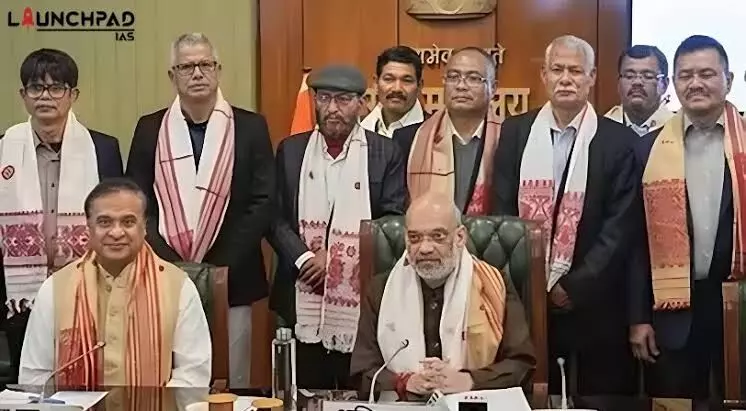The Lost War of ULFA: A Generation Sacrificed, a Cause Squandered

The story of ULFA — the United Liberation Front of Asom — remains one of the most poignant and painful chapters in Assam’s modern history. Conceived in 1979 amid genuine grievances of alienation, identity loss, and economic exploitation, ULFA rose as an audacious voice of Assamese nationalism.
For a while, it carried the aspirations of a restless youth who felt abandoned by both Delhi and Dispur. At its peak in the late 1980s and early 1990s, ULFA ran a shadow administration, extracting taxes, dispensing justice, and inspiring fear.
But from its very inception, it was also a house divided — driven more by emotion than strategy, more by slogans than by vision. The rise was meteoric; the decline inevitable.
The Indian state hit back with overwhelming force — Operations Bajrang and Rhino dismantled its bases, while sanctuaries in Bhutan and Myanmar fell one by one. ULFA splintered: one faction, led by Paresh Baruah, fled deeper into the mountains and jungles, clinging to an ever-fading dream of sovereignty.
The other, under leaders like Golap Baruah (Anup Chetia), entered into negotiations, surrendering the movement’s political capital in exchange for personal safety and minor concessions. The Assamese youth, who had carried guns and dreams in equal measure, found themselves abandoned — disillusioned, hunted, or dead.
The real tragedy lies in what ULFA became: a movement whose leaders waged a war from safe houses and foreign capitals while the young bled on the ground. Neither Paresh Baruah nor Golap Baruah fought from the frontlines; yet thousands of nameless boys and girls laid down their lives for an obscure, poorly defined cause that the leadership itself could neither articulate nor achieve. The cousins — Paresh and Golap — stand today as two faces of the same betrayal: one clinging stubbornly to an obsolete fantasy, the other hollowing the movement from within, like Shalya in the Mahabharata, undermining it under the guise of loyalty.
And what remains? A generation lost, villages hollowed out, mothers who still wait at their doorsteps, and names carved on no memorials. The young men who once carried guns and dreams alike now lie in unmarked graves or live on as shadows of what they could have been. Meanwhile, the very leaders who once thundered about sovereignty and sacrifice now shuffle into press conferences, lamenting that the Centre and the state have not “implemented the accord.” Once they promised the moon, now they plead for scraps — minor pensions, the withdrawal of pending cases, rehabilitation schemes. A revolution, reduced to an administrative file gathering dust in some ministry. A dream, bartered for crumbs.
Here we stand, in the wake of this long, senseless war — a war that neither side truly fought nor truly won. On one side, the state crushed militancy with brutal efficiency but never cared to heal the wounds or answer the questions that gave rise to it. On the other, the militants squandered the youth of a generation chasing an undefined dream, sacrificing others while staying far from the line of fire themselves. Both left behind a trail of broken families, bitter silences, and a haunting question: “Was it worth it?”
What this story cries out for is a Vidura — a blunt, fearless voice to stand in the ruins and declare: "You squandered your youth, betrayed your people, and stained your soil with the blood of your brothers — and now you sit at the feet of the very power you once vowed to overthrow, begging for amnesty and mercy. Enough. Enough of the lies. Enough of the cowardice. Let the truth walk free at last."
Until that Vidura rises — unafraid to speak what others dare not — Assam will remain haunted by the ghosts of a war it never truly chose, a peace it never fully embraced, and a generation that never got to live its own story.
